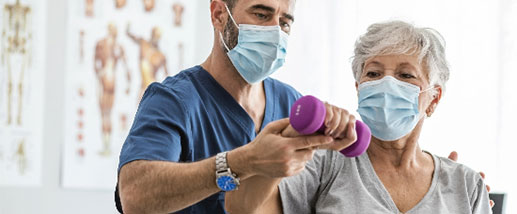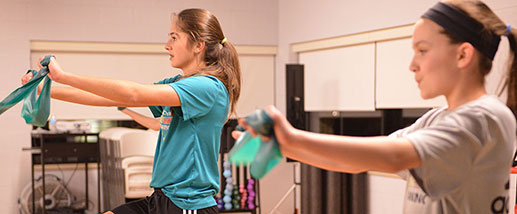Stroke Prevention: Small Steps, Big Impact
April 7, 2025Author: Emily Haller, MS, RDN, DipACLM
A stroke can be life-changing, but the good news is that up to 80% of strokes are preventable with the right lifestyle choices! By focusing on six key pillars of Lifestyle Medicine—nutrition, movement, avoiding risky substances, sleep, stress management, and social connection—you can take control of your health and protect your brain.
Let’s dive into simple, powerful ways to reduce your risk of stroke.
Nourish Your Brain
What you eat plays a huge role in stroke prevention. A whole food, plant-based diet is linked to lower blood pressure, reduced cholesterol, and better blood sugar control—all of which help keep your blood vessels healthy.
Boost Fiber for Blood Sugar & BP Control
High-fiber foods like beans, lentils, whole grains, fruits, and vegetables help lower blood pressure (BP), cholesterol, and blood sugar levels, reducing stroke risk. Aim for 25-38g of fiber per day—most Americans fall short!
Try This: Instead of a sugary breakfast cereal, try oatmeal topped with berries and nuts. You’ll get more fiber, less added sugar, and steady energy to start your day right!
Slash the Sodium
Excess sodium can raise blood pressure, a major stroke risk factor. The average American eats 3,400 mg of sodium daily, way over the recommended 2,300 mg max (or ideally, 1,500 mg for high-risk individuals). Flavor your meals with herbs, spices, vinegars, and citrus instead of salt. When buying packaged foods, look for “low sodium” options on the label.
Try This: Cook more meals at home using fresh, whole foods instead of dining out. Homemade meals often have less sodium, unhealthy fats, and added sugars, making them a great choice for heart and brain health.
Not sure where to start or looking for guidance on how to cook plant-forward meals? Check out Cooking with Plants, our free class series designed to help you create simple, delicious, and nourishing meals!
Move Your Body, Strengthen Your Brain
Regular physical activity is one of the best things you can do to lower your stroke risk. Examples include:
- Running
- Walking
- Biking
- Yoga
- Swimming
Exercise Lowers Blood Pressure & Improves Circulation
Aiming for 150 minutes of moderate exercise per week (like brisk walking) helps keep BP in check. Even 10-minute movement breaks throughout the day add up!
Try This: Take the stairs, park further away, dance in your kitchen—just move daily!
Avoid Risky Substances
Certain habits can raise your risk of stroke, but the good news is that change is possible.
Quit Smoking for Good
Smoking doubles your risk of stroke by damaging blood vessels and increasing clot formation. The benefits of quitting start almost immediately!
Need Support? Check out smokefree.gov or the National Quitline (1-800-QUIT-NOW) for free resources.
Sip Smarter: Cut Back on Alcohol
Excess alcohol raises blood pressure and contributes to atrial fibrillation (a heart rhythm issue that increases stroke risk). Keep it to no more than 1 drink per day for women and 2 for men——or try a refreshing alternative, like this sparking mint mocktail instead!
Prioritize Sleep
Lack of sleep is linked to high blood pressure, insulin resistance, and stroke risk. Adults should aim for 7-9 hours of quality sleep per night.
Try This: Create a relaxing bedtime routine—dim lights, avoid screens before bed, and keep your room cool and quiet.
Manage Stress to Protect Your Heart & Brain
Chronic stress can raise blood pressure and increase inflammation, increasing stroke risk. The key is healthy stress management.
Mindfulness & Deep Breathing help calm the nervous system and lower BP. Try box breathing: inhale for 4 seconds, hold for 4, exhale for 4, hold for 4.
Movement & Nature reduce stress and improve heart health. Even a 10-minute walk outside helps!
Stay Connected for a Healthy Heart️
Loneliness and social isolation can increase stress and BP, making connection a key part of stroke prevention.
Nurture Your Relationships—reach out to a friend, join a group, or volunteer. Strong social ties improve mental and physical health!
Take Action Today
Stroke prevention doesn’t have to be overwhelming. Small, consistent changes—eating more fiber, moving more, quitting smoking, sleeping better, managing stress, and staying connected—can make a big difference.





